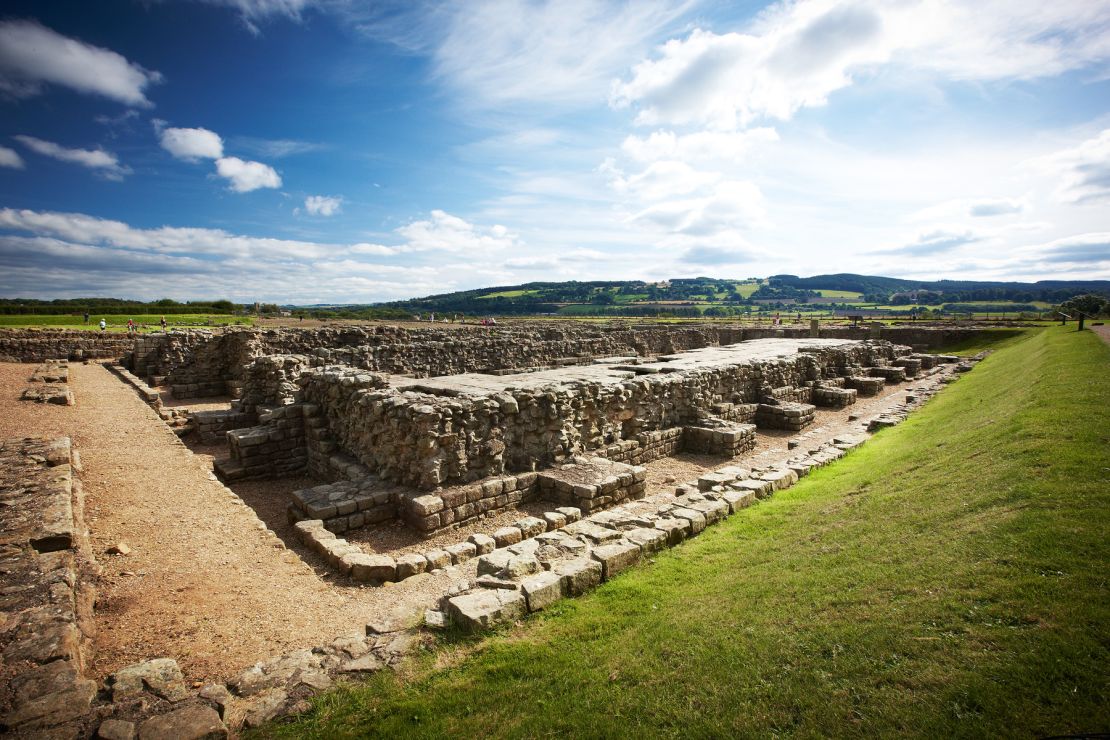Sign up for CNN’s Wonder Theory science newsletter. Explore the universe with news on fascinating discoveries, scientific advancements and more.
A rare knife handle in the shape of a gladiator has been discovered at Hadrian’s Wall in the north of England, shining a new light on the celebrity status of the ancient Roman combatants.
The copper alloy knife handle depicts a class of gladiator known as a “secutor,” according to conservation charity English Heritage, which cares for the historic site where the artefact was found.

Secutors (Latin for pursuers) were fully armed and would be matched with a “retiarius,” or “net man,” who would be dressed in only a short tunic or apron and would try to use the net he carried to entangle his pursuer.
The secutor gladiator depicted on the knife handle wears a helmet, holds a big shield and has his left hand out, which would have been holding a sword.
This suggests he was left-handed – a trait considered unlucky in the Roman world, and therefore could mean the figurine shows a specific gladiator, English Heritage said in a media statement Friday.

Despite being largely enslaved people and criminals, successful gladiators enjoyed celebrity status, “having individual fans who would follow them and give them gifts,” Frances McIntosh, collections curator for Hadrian’s Wall and the North East at English Heritage, said in a video on the discovery. “So, it might be that this person (the knife’s owner) really liked this gladiator and had his knife handle made specifically to represent him.”
Some gladiators learned to fight left-handed, to try to gain an advantage over their opponents, according to English Heritage.
The 2,000-year-old knife handle was found in the Tyne River at Corbridge Roman Town on Hadrian’s Wall, a defensive barrier built by the occupying Romans in northeast England. The town had a bustling, vibrant community and was a supply base where Romans got food and provisions, according to the organization’s website.
“It is rare to find a piece of gladiator memorabilia in Britain and to find such a well preserved and interesting piece is particularly remarkable,” McIntosh said in the release.
“This beautifully made knife handle is a testament to how pervasive this celebrity culture was, reaching all the way to Hadrian’s Wall at the very edge of the Roman Empire,” she added.
Muscle-bound heartthrobs
Strong and muscular, gladiators had sex appeal and would receive gifts from women, according to McIntosh. She said sometimes even high-status women would apparently defy the class difference and “run off with gladiators or would fall in love with gladiators.”
“Even now, almost two thousand years later, the fascination around gladiators persists and has expanded even further into modern popular culture, as evidenced by the excitement surrounding the new Gladiator film sequel,” McIntosh said.
“Gladiator II,” the sequel to Ridley Scott’s 2000 blockbuster, will be released in the United States on November 22.




